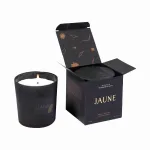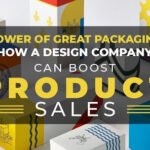Properly packaging your products is very important as this will keep the product safe and put a good impression of the brand in front of the customer. Packaging can make or break your brand. Good packaging can ensure customer retention, whereas bad packaging can drive customers away.
To be able to choose the right packaging, one must first have an understanding of the different types of packaging and their characteristics. Here we will discuss two types and how and why they should be used. These two types are cold-seal packaging and heat-seal packaging.
Cold-Seal Packaging
The Cold Seal is used in many industries and is preferred for temperature-sensitive. These products include chocolate, other confectionery, ice cream and medical packaging. All you need is pressure. No heat is required in this process. The process involves two pieces of film, one with the brand owner’s packaging design printed on the back and one that forms a barrier to protect the product. This type of packaging is unique in that it only seals to itself. For example, when a substrate coated with a cold seal adhesive comes into contact with another substrate coated with the same cold seal adhesive, the two are brought together by pressure rather than heat. Cold sealing is sometimes called self-sealing.
Using cold seal adhesives can allow you to choose from low to high adhesion levels depending on the application and packaging specifications.
However, the most notable advantage of cold seal technology is speed. The cold sealing process is up to ten times faster than heat sealing. This is because you can immediately start the production line without waiting for the machines to get heated, like heat sealing. In addition, the absence of heat prevents burns and creates a safer working environment. However, cold sealing has its drawbacks.
Depending on the type of product being packaged, it lacks chemical resistance and some other properties. Cold Seal Adhesive is also air sensitive and requires a suitable release surface.
Benefits of Cold-Seal Packaging
Every single type of packaging has its benefits. The benefits of cold seal packaging are;
Product Protection
Packages made with cold seals do not need to be filled and provide better protection for the product inside. This saves space and costs you would incur, giving the package extra protection.
Increased Efficiency
Another benefit of cold-seal packaging is that you can keep your machine running fast with easy-to-use features like batch processing and length adjustment for variable-size packages. The instruction to run the machine is not very hard, making training labour very easy. This will save you labour training costs as well. The machine can make up to eight to sixteen packages per minute. This is a very high number and can save a lot of your time.
Fewer Costs
With cold-seal packaging, you can control your costs. This is a huge advantage. You do not need additional equipment, and the machines are not very heavy. This will not require much electricity, and you can save electricity costs.
Heat-Seal Packaging
Heat sealing is the most widely used package sealing technique and is preferred when a high-integrity seal is required. Heat seal packaging consists of three layers.
These three layers are multi-layer films with an outer layer, a core layer and an inner sealing layer. Heat-seal packaging does not require special processes or materials. This makes it a cost-effective packaging method. Heat seal films are available in various laminations and offer a wider range of performance characteristics. Cold seal films do not have such characteristics. Better barrier properties keep oxygen, light, and other environmental elements out of the package. We can also create tamper-evident seals to ensure product integrity.
Three elements are involved in this process. These three elements must be carefully controlled during production to ensure effective heat sealing. The three elements are;
Heat
This should be checked on the surfaces of the sealing to avoid overheating.
Pressure
The pressure that is applied by the machine must be monitored and controlled.
Dwell
This is when the machine is in contact with the sealing surface. This should be monitored at all times.
These factors work together to create a seal and must be balanced to create an effective seal. The heat seal can be used in many food and beverage applications, bags and pouches of all shapes and sizes.
Benefits of Heat-Seal Packaging
Heat-seal packaging has many benefits like cold-seal packaging. Some of the benefits of cold-seal packaging are;
Protective Material
The heat-seal packaging uses a strong material. This material provides a strong package that helps protect the contents from inclement weather such as rain and snow. It is a tight seal that prevents any outside foreign elements from entering the package. It is also a light material. The lighter material could reduce shipping costs, making this an excellent choice.
Adhesives Not Required
Heat sealing uses heat to seal, so no special adhesive is required. The heat machines are used to put the heat seal on the packaging. This makes it unnecessary to use any other adhesives. This also saves the cost you might incur while getting any other material for the packaging.
Increased Efficiency
You can make about eight to six packages per minute with cold seal packaging. This is a large number. When these many packages are being made, it saves much time. As machines are being used, you do not need additional labour. This will save your labour costs as well. This also increases efficiency as you are making many packages and more packages than you would make with human labour.
These are the differences between heat-seal and cold-seal packaging. Both have benefits and can give your product the appeal and protection it requires. In conclusion, cold seals are ideal for companies packaging stiffer, denser products such as books, CDs, and video games. On the other hand, heat sealing is ideal for companies packing clothing, textiles, shoes and other packaging items.








